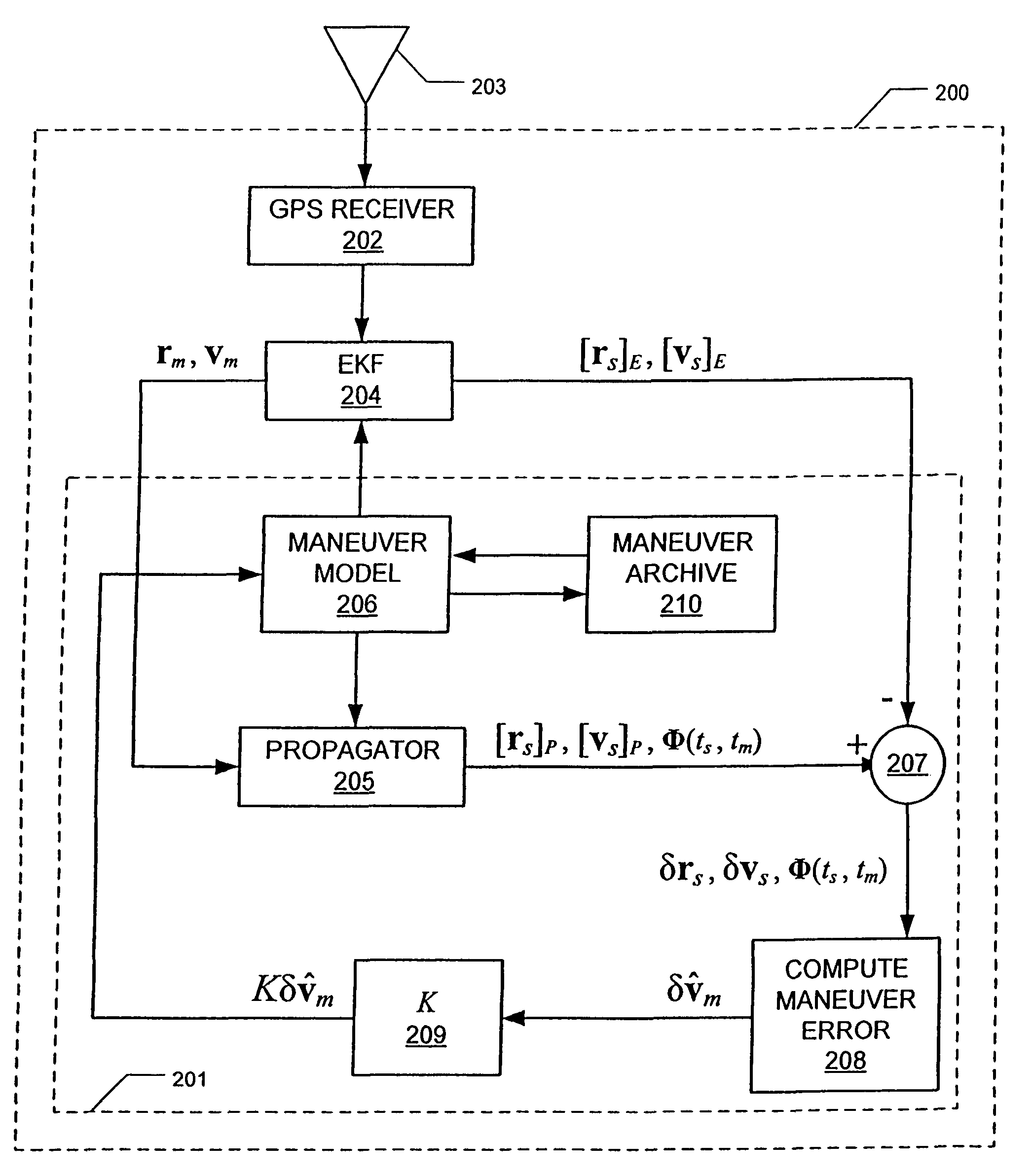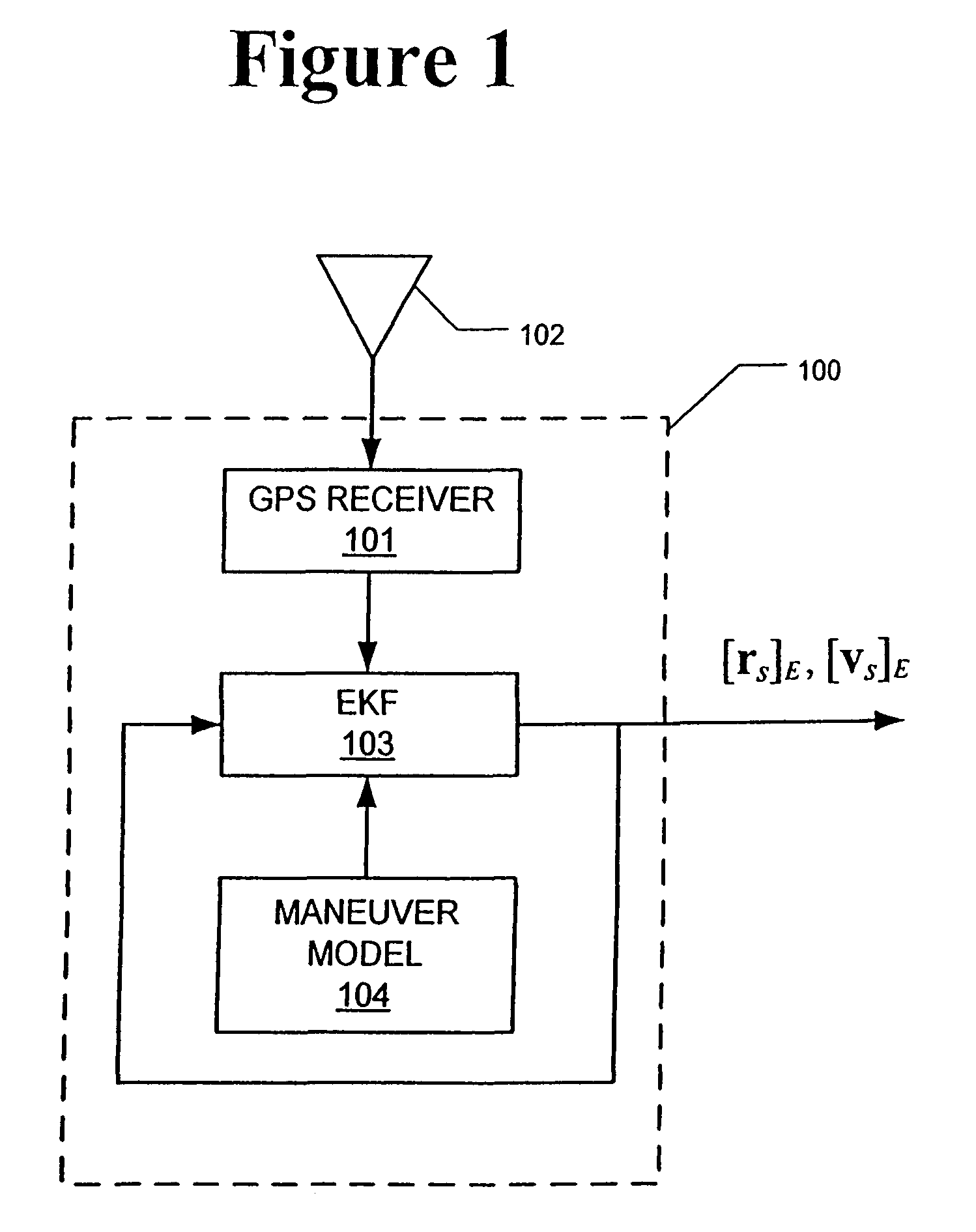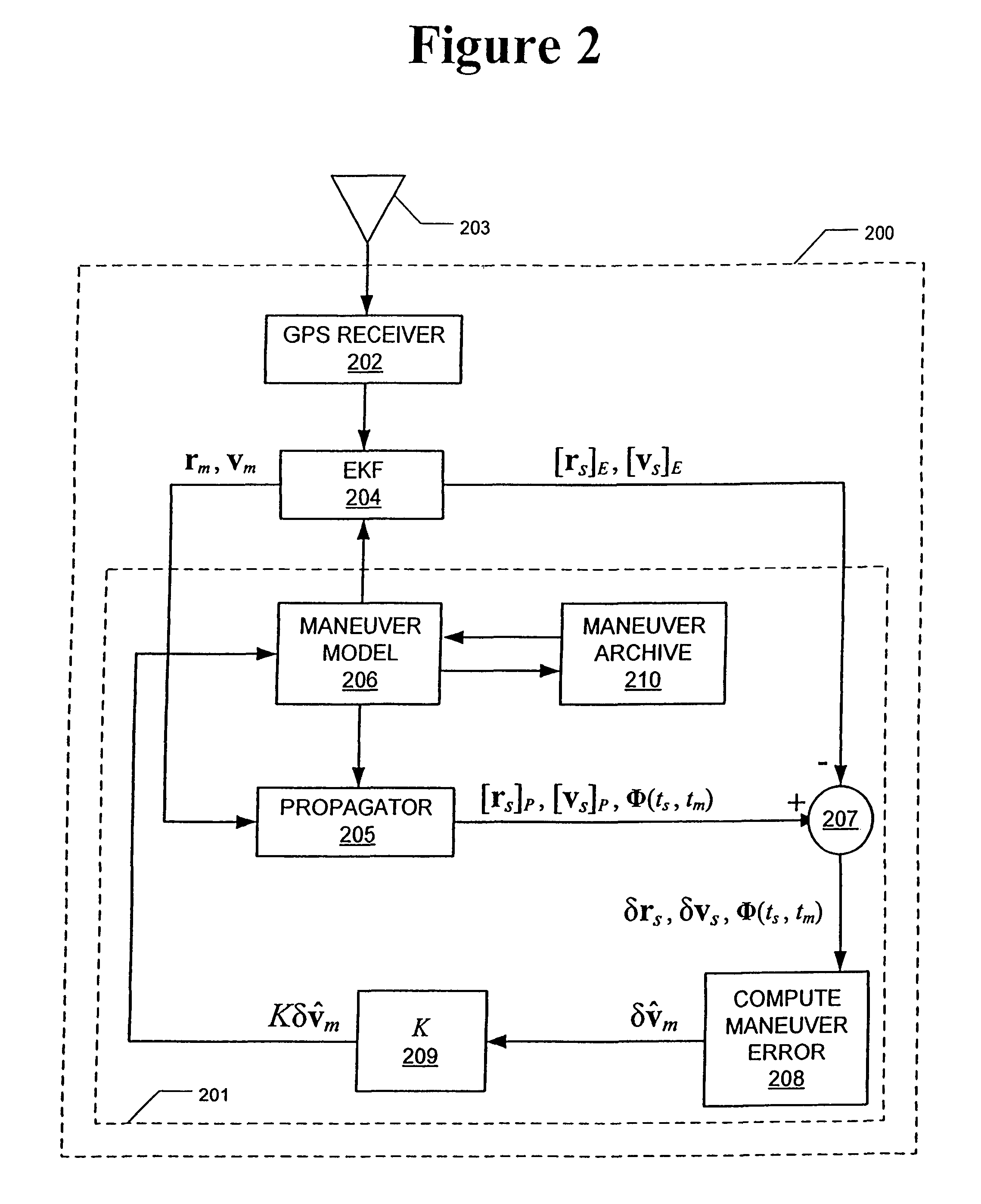Geosynchronous spacecraft autonomous navigation
a geosynchronous spacecraft and autonomous technology, applied in the field of spacecraft navigation, can solve the problems of difficulty in firing thrusters, inability to continuously provide signals from four gps satellites to a gps receiver in geo, and significant uncertainty in the orbital effect of thrusters
- Summary
- Abstract
- Description
- Claims
- Application Information
AI Technical Summary
Benefits of technology
Problems solved by technology
Method used
Image
Examples
Embodiment Construction
[0020]In the following detailed description, numerous specific details are set forth to provide a full understanding of the present invention. It will be apparent, however, to one ordinarily skilled in the art that the present invention may be practiced without some of these specific details. In other instances, well-known structures and techniques have not been shown in detail to avoid unnecessarily obscuring the present invention.
[0021]FIG. 1 illustrates a spacecraft with an onboard GPS navigation system. The navigation system 100 consists of a GPS receiver 101 which receives GPS signals from an antenna 102, and which provides measured information about the position and velocity of a spacecraft (e.g., pseudorange measurements) to an Extended Kalman Filter (“EKF”) 103. EKF 103 produces state estimates ([rs]E, [vs]E) at some frequency in real time or near real time. EKF 103 uses a simple maneuver model 104 to predict the effects of an orbit or momentum adjust maneuver on future posi...
PUM
 Login to View More
Login to View More Abstract
Description
Claims
Application Information
 Login to View More
Login to View More - R&D
- Intellectual Property
- Life Sciences
- Materials
- Tech Scout
- Unparalleled Data Quality
- Higher Quality Content
- 60% Fewer Hallucinations
Browse by: Latest US Patents, China's latest patents, Technical Efficacy Thesaurus, Application Domain, Technology Topic, Popular Technical Reports.
© 2025 PatSnap. All rights reserved.Legal|Privacy policy|Modern Slavery Act Transparency Statement|Sitemap|About US| Contact US: help@patsnap.com



